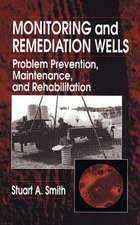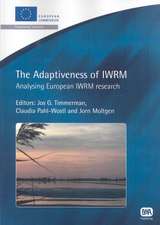Information Needs for Water Management
Autor Jos G. Timmermanen Limba Engleză Hardback – 22 iul 2014
Preț: 765.84 lei
Preț vechi: 1103.75 lei
-31% Nou
Puncte Express: 1149
Preț estimativ în valută:
146.56€ • 152.45$ • 120.100£
146.56€ • 152.45$ • 120.100£
Carte tipărită la comandă
Livrare economică 14-28 aprilie
Preluare comenzi: 021 569.72.76
Specificații
ISBN-13: 9781466594746
ISBN-10: 1466594748
Pagini: 236
Ilustrații: 28 black & white illustrations, 2 colour illustrations
Dimensiuni: 156 x 234 x 18 mm
Greutate: 0.54 kg
Ediția:1
Editura: CRC Press
Colecția CRC Press
ISBN-10: 1466594748
Pagini: 236
Ilustrații: 28 black & white illustrations, 2 colour illustrations
Dimensiuni: 156 x 234 x 18 mm
Greutate: 0.54 kg
Ediția:1
Editura: CRC Press
Colecția CRC Press
Cuprins
Introduction ‐ setting the scene. The link between monitoring and water management. How to develop the process. Analyzing the water management situation. Transforming water policy into information needs. The next steps.
Descriere
This book provides the necessary elements to determine exactly what information should be collected to make the collected information relevant for policy makers. It highlights the dissatisfaction of information users about the information they get and the reasons for this dissatisfaction. It also discusses general issues around the role and use of information in policy making. The text then describes the how to develop a full understanding of the policy makers’ information needs and will describe how policy makers can be included in the process. Finally, the book describes how the results from this process are input for the information production process.
















